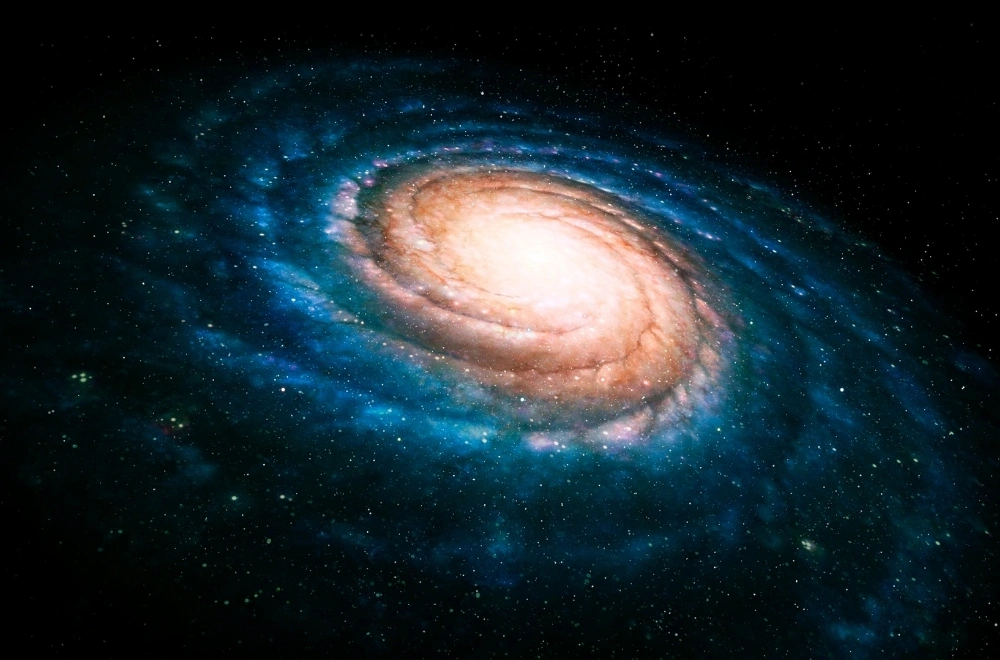Introduction
When you look up at the night sky, you see countless stars scattered across the darkness. But did you know that most of these stars belong to a much larger structure called a galaxy? Galaxies are among the most fascinating and fundamental building blocks of the universe. They come in various shapes, sizes, and colors, each containing billions or even trillions of stars, along with gas, dust, and mysterious dark matter.
In this beginner’s guide, we’ll explore what galaxies are, how they form, the different types of galaxies, and our place within one of them—the Milky Way.
What Is a Galaxy?
A galaxy is a vast, gravitationally bound system consisting of:
- Stars (like our Sun)
- Planets (orbiting those stars)
- Nebulas (clouds of gas and dust)
- Black holes (extremely dense objects with intense gravity)
- Dark matter (an invisible substance that makes up most of a galaxy’s mass)
Galaxies can range in size from dwarf galaxies with just a few million stars to giant elliptical galaxies with trillions of stars. The universe is estimated to contain over two trillion galaxies, each moving and evolving in its own way.
How Do Galaxies Form?
Galaxies formed shortly after the Big Bang, the event that created the universe about 13.8 billion years ago. Here’s a simplified breakdown of how galaxies came to be:
- The Early Universe – After the Big Bang, the universe was a hot, dense soup of particles. As it expanded and cooled, tiny fluctuations in density allowed matter to clump together.
- Dark Matter’s Role – Invisible dark matter (which makes up about 27% of the universe) formed a “scaffolding” that pulled gas and dust into dense regions.
- First Stars and Protogalaxies – About 100-200 million years after the Big Bang, the first stars ignited inside small, irregular clumps of matter called protogalaxies.
- Galaxy Mergers – Over billions of years, these protogalaxies collided and merged, forming larger galaxies like the ones we see today.
Types of Galaxies
Galaxies come in different shapes and structures. In the 1920s, astronomer Edwin Hubble classified galaxies into three main types:
1. Spiral Galaxies
- Shape: Flat, rotating disks with spiral arms
- Features:
- A bright central bulge (often containing older stars)
- Spiral arms rich in gas, dust, and young, hot stars
- A surrounding halo of dark matter and globular star clusters
- Examples:
- Milky Way (our galaxy)
- Andromeda Galaxy (closest spiral galaxy to us)
2. Elliptical Galaxies
- Shape: Round or oval, with no distinct spiral arms
- Features:
- Mostly older stars (less gas and dust, meaning fewer new stars form)
- Range from small (dwarf ellipticals) to massive (giant ellipticals)
- Often found in Star system clusters
- Examples:
- M87 (a supergiant elliptical galaxy with a famous black hole)
3. Irregular Galaxies
- Shape: No defined shape (often chaotic)
- Features:
- Often the result of galaxy collisions or gravitational disruptions
- Rich in gas and dust, leading to active star formation
- Examples:
- Large Magellanic Cloud (a satellite galaxy of the Milky Way)
Our Galaxy: The Milky Way
We live inside a barred spiral Star system called the Milky Way. Here are some key facts about it:
- Diameter: ~100,000 light-years
- Number of Stars: ~100-400 billion
- Central Black Hole: Sagittarius A* (4 million times the Sun’s mass)
- Structure:
- Disk: Where our Solar System resides (about 27,000 light-years from the center)
- Bulge: Dense central region with older stars
- Halo: A sphere of dark matter, old stars, and globular clusters
In about 4.5 billion years, the Milky Way will collide with the Andromeda Galaxy, forming a new, larger galaxy nicknamed “Milkomeda.
Galaxy Clusters and Superclusters
Galaxies are not isolated—they group together in clusters and superclusters:
- Galaxy Groups: Small collections (e.g., the Local Group, which includes the Milky Way and Andromeda)
- Galaxy Clusters: Hundreds to thousands of galaxies (e.g., the Virgo Cluster)
- Superclusters: Massive structures made of multiple clusters (e.g., the Laniakea Supercluster, which contains the Milky Way)
These large-scale structures are held together by gravity and dark matter.
How Do We Study Galaxies?
Astronomers use various tools and methods to study galaxies:
- Telescopes – Both ground-based (e.g., Keck Observatory) and space-based (e.g., Hubble Space Telescope, James Webb Space Telescope) capture images of distant galaxies.
- Radio Astronomy – Detects radio waves from gas clouds and black holes (e.g., ALMA telescope).
- Spectroscopy – Analyzes light to determine a galaxy’s composition, distance, and motion.
- Computer Simulations – Helps model galaxy formation and collisions.
Fascinating Facts About Galaxies
- The most distant known Star system, GN-z11, is 13.4 billion light-years away—we see it as it was just 400 million years after the Big Bang!
- Some galaxies, called active galaxies, have supermassive black holes that produce enormous energy (e.g., quasars).
- The largest galaxy ever discovered, IC 1101, is 6 million light-years wide (50x larger than the Milky Way).
Conclusion
Galaxies are the universe’s grand cities of stars, planets, and cosmic wonders. From the majestic spirals to the chaotic irregulars, each galaxy tells a story of cosmic evolution. Our Milky Way is just one of trillions, part of an ever-expanding universe full of mysteries waiting to be uncovered.
Whether you’re gazing at the night sky or exploring deep-space images from telescopes, remember: every point of light could be an entire galaxy, home to billions of stars and possibly other worlds like ours.
Would you like to learn more about a specific type of universe or how black holes influence them? Let us know in the comments!
